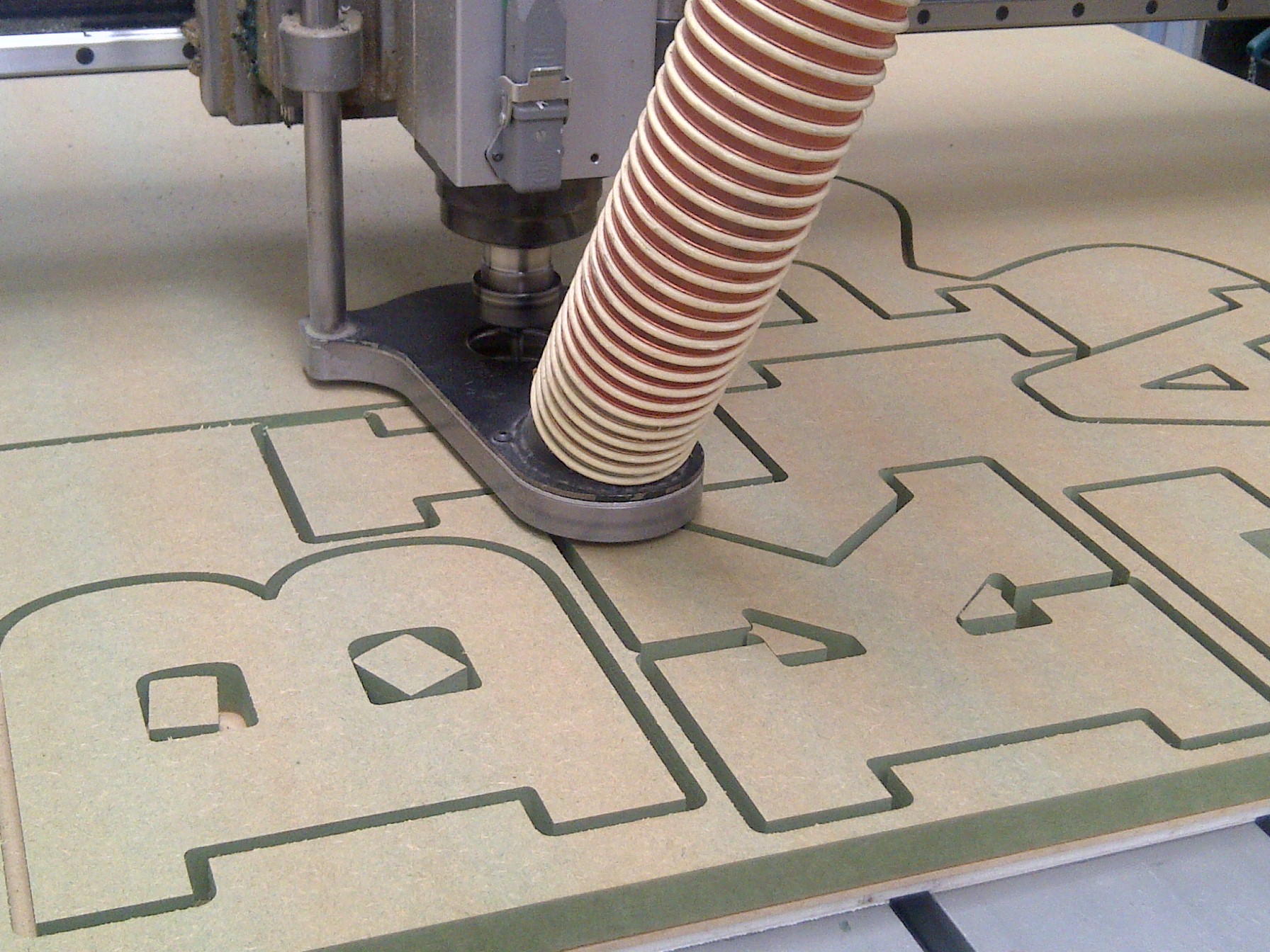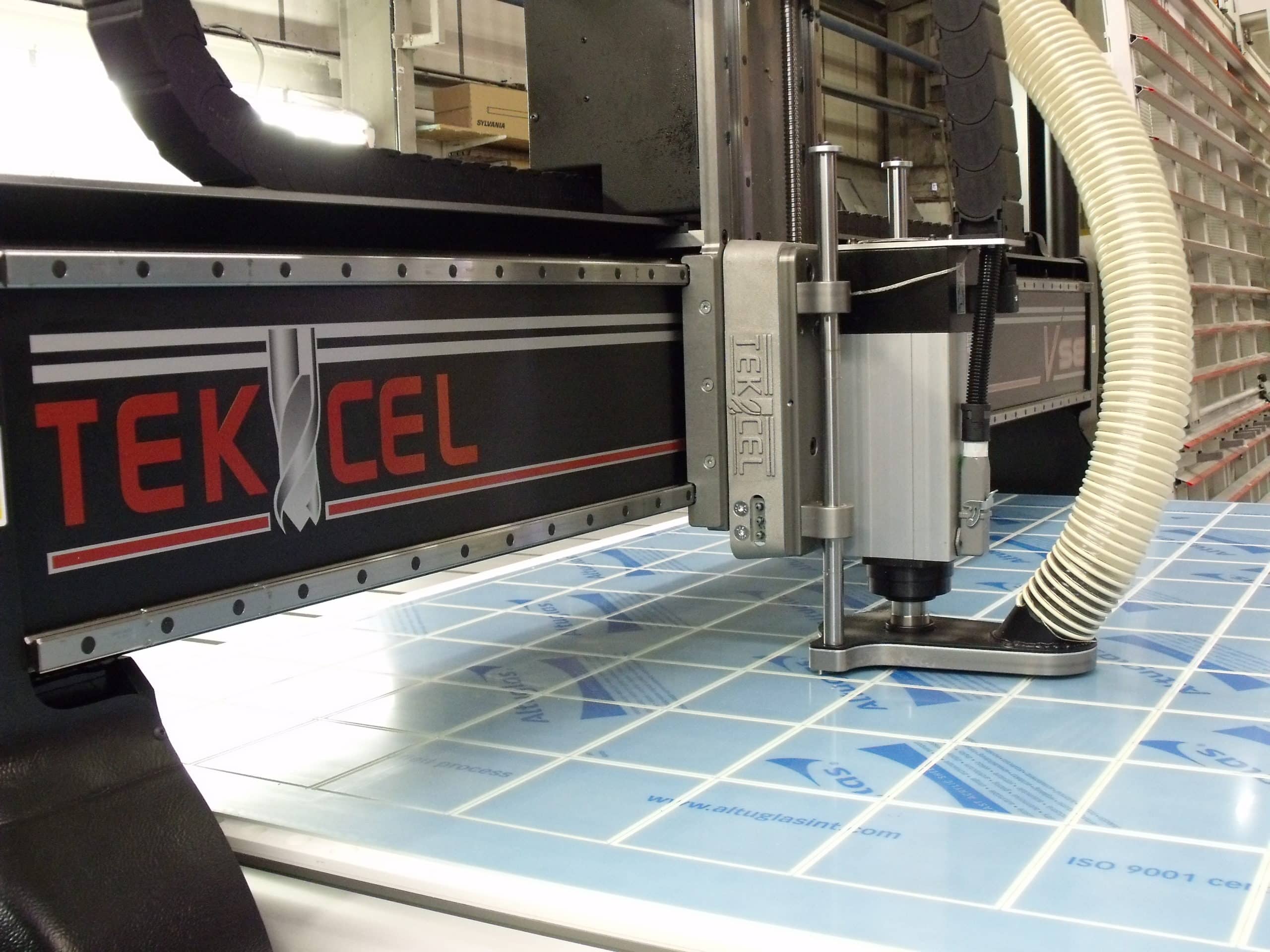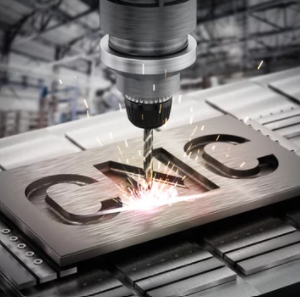Peter was invited to view the latest CNC facilities at Cherwell, a long-established sign trade supplies and systems company. As a writer on signage and other industry topics, he was well aware that Cherwell had this capability, but surprised by the scope. He writes: I was interested to learn that Cherwell’s CNC Routing Service does far more than signs. During a recent visit to their central UK facility at Brackley, Managing Director Jake Douglass showed me around, and taught me the wonders of these machines and what the Cherwell team do.

What is CNC Routering?
Very simply, CNC routering (often abbreviated to routing) is where the router (a small cutting blade spinning very fast) is rapidly moved across a large bed by computer control. Normally used for intricate designs on flat sheets, you simply put a sheet of material in one end, a CAD drawing into the other, and in a very short time you have a beautifully cut product, with very accurate clean lines. A wide variety of materials can be used, but for very hard materials such as steel, you would more likely look for a CNC milling service.
What Can Cherwell Handle?
The machines at Cherwell take large sheets up to 4050 x 2030mm and can work with thicknesses from 25mm down to 2mm. The most common materials are aluminium composite material (ACM), Foam PVC, Polycarbonate, Rigid PVC, Plywood and MDF. Acrylic is also cut, but for this they also have a Laser Cutting Service, which can produce even finer cutting detail than the router.
How Does the CNC Router Work?
Firstly a drawing of the required design is produced with CAD (computer-aided design) software. Sometimes the customer will supply an EPS, Ai or DWG file, and in other cases, the Cherwell design team will draw up the requirement. Then a sheet material is selected of appropriate size and thickness. For multiple small parts, the software will calculate the most efficient nesting arrangement and tell you what size sheet is best. The sheet is held down by a suction bed, and the cutter starts – it runs in 3 directions, X, Y and Z axis – side to side, end to end, plunging down into the material in a controlled but very rapid way. The spinning blade runs very fast so material is removed with very little stress on the sheet, allowing very intricate designs with smooth edges.

What Can CNC Routering be Used For?
Cherwell have long been producing high-quality fret-cut signs and cut-out letters for the signage trade, as mentioned. But CNC routering is used for many different purposes. Examples include:
- Signage – Flat-Cut Letters or sign trays with Fret-Cut Letters or Logos, and Shaped Panels
- Exhibition stand Contractors – Logos, or shaped back panels or feature walls
- Furniture making – sheets of timber and mdf for complex and precise customised designs
- Prototypes and Models – quickly visualise the finished article through an inexpensive prototype material
- Boat Making – some marine manufacturers shape timber and fibre boards for structural or decorative parts
- Shopfitting or Interior design – interesting details can be created efficiently, and customised to the building’s interior
- Automotive – from dashboards and interior panels to engine parts, soft metals and plastics are cut with CNC routers.
- Aerospace – soft furnishing materials and decorative panels or lighting cut to compact and complex shapes within the confines of an aircraft.

Single Items to Large Production Runs
One of the great strengths of CNC routering is that it is equally suited to a one-off project or a large volume run. The machine requires minimal setup, and the cutter works at a very high speed, so the operator time required for each part is very small. For large volume work many identical pieces can be quickly cut from one large sheet, with no need to stop between each component. Where different cutter blades are required, the machine simply changes the bit automatically, again saving time.
What is a Typical Lead-Time for Cherwell’s CNC Routering Service?
I asked Mick, the production manager, what was usual in this department, and he explained there are often 2 or 3 stages. Actual lead-times will vary according to workload, but frequently they can achieve:
- CAD Drawings produced in 1-2 days
- Quotes returned in 4 hours
- Production work completed and delivered in 2-4 days
And as most work goes out delivered on Cherwell’s own vans, he knows that the finished items will arrive safely and quickly in pristine condition. That’s what makes working in this department so satisfying – from drawing to completion, fast, smart and precise.
Get a quote for CNC routering or cutting → Laser Cutting and CNC Router Services



